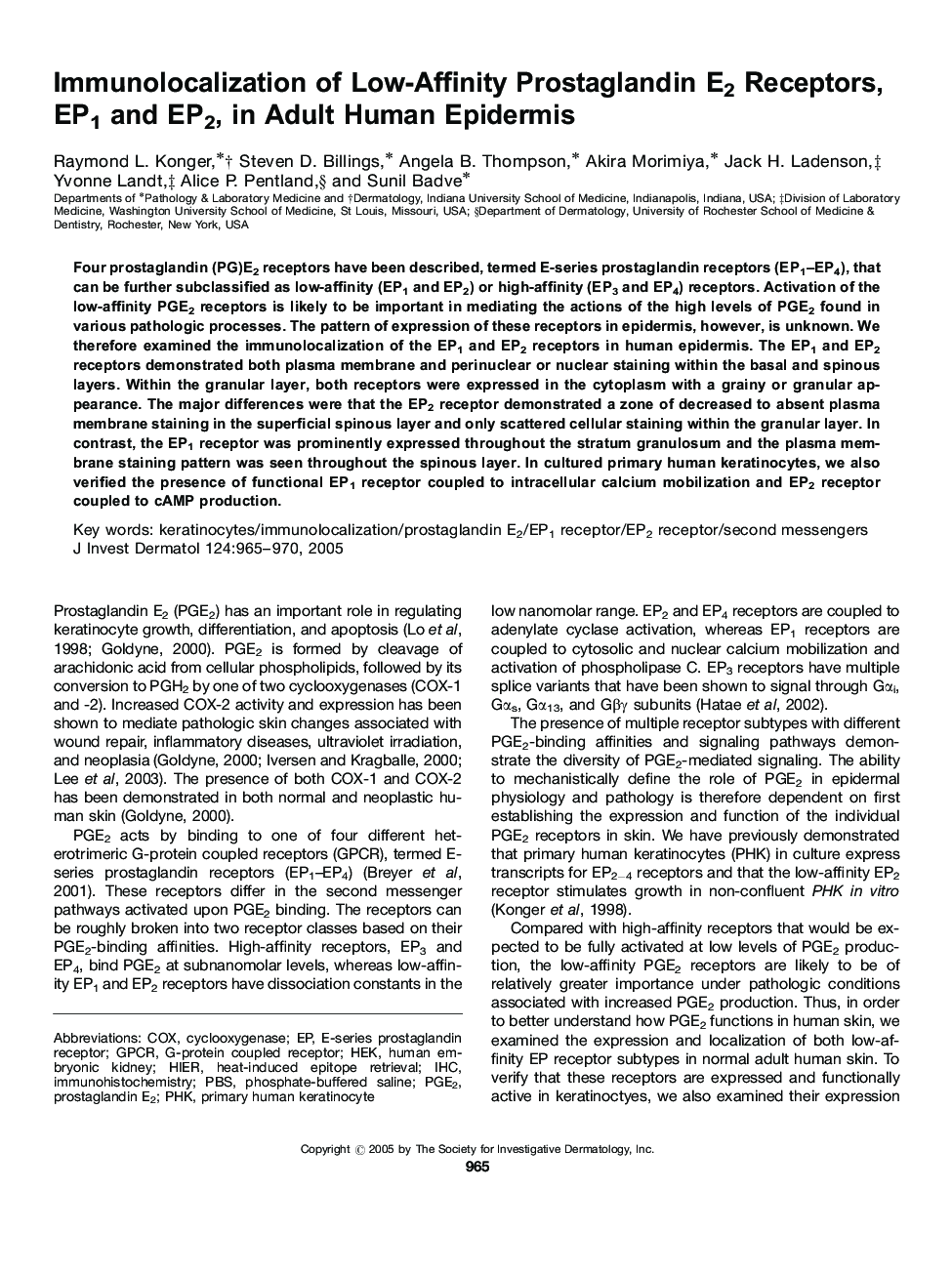| Article ID | Journal | Published Year | Pages | File Type |
|---|---|---|---|---|
| 9231171 | Journal of Investigative Dermatology | 2005 | 6 Pages |
Abstract
Four prostaglandin (PG)E2 receptors have been described, termed E-series prostaglandin receptors (EP1-EP4), that can be further subclassified as low-affinity (EP1 and EP2) or high-affinity (EP3 and EP4) receptors. Activation of the low-affinity PGE2 receptors is likely to be important in mediating the actions of the high levels of PGE2 found in various pathologic processes. The pattern of expression of these receptors in epidermis, however, is unknown. We therefore examined the immunolocalization of the EP1 and EP2 receptors in human epidermis. The EP1 and EP2 receptors demonstrated both plasma membrane and perinuclear or nuclear staining within the basal and spinous layers. Within the granular layer, both receptors were expressed in the cytoplasm with a grainy or granular appearance. The major differences were that the EP2 receptor demonstrated a zone of decreased to absent plasma membrane staining in the superficial spinous layer and only scattered cellular staining within the granular layer. In contrast, the EP1 receptor was prominently expressed throughout the stratum granulosum and the plasma membrane staining pattern was seen throughout the spinous layer. In cultured primary human keratinocytes, we also verified the presence of functional EP1 receptor coupled to intracellular calcium mobilization and EP2 receptor coupled to cAMP production.
Related Topics
Health Sciences
Medicine and Dentistry
Dermatology
Authors
Raymond L. Konger, Steven D. Billings, Angela B. Thompson, Akira Morimiya, Jack H. Ladenson, Yvonne Landt, Alice P. Pentland, Sunil Badve,
